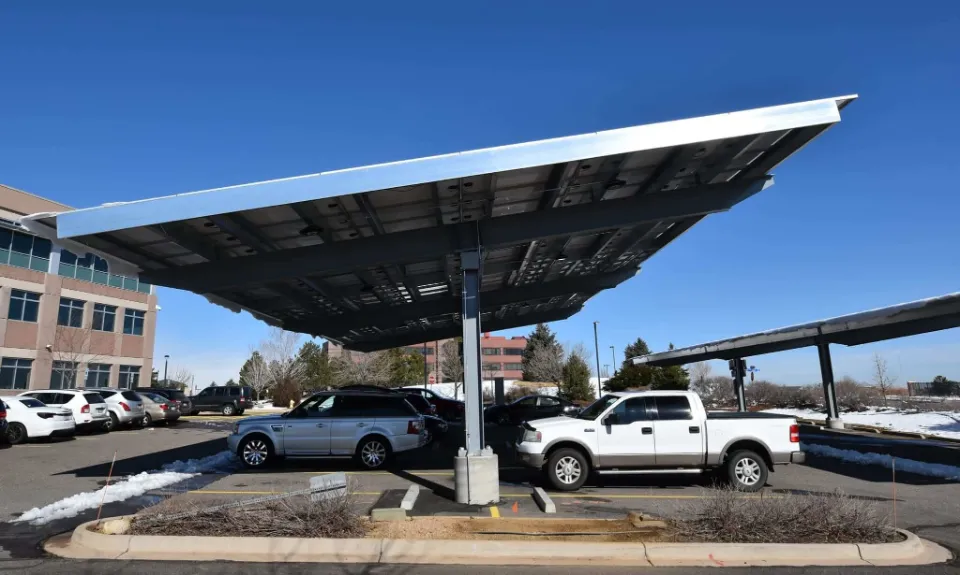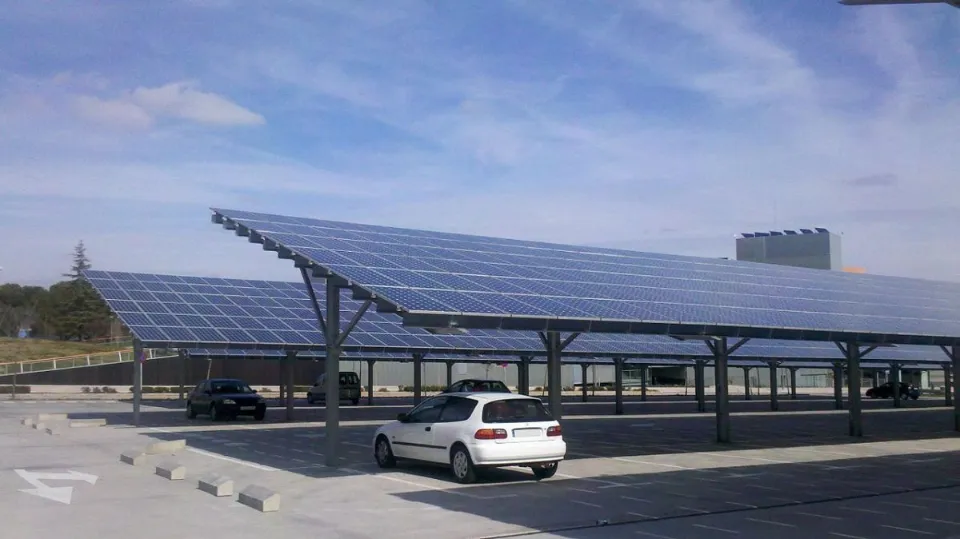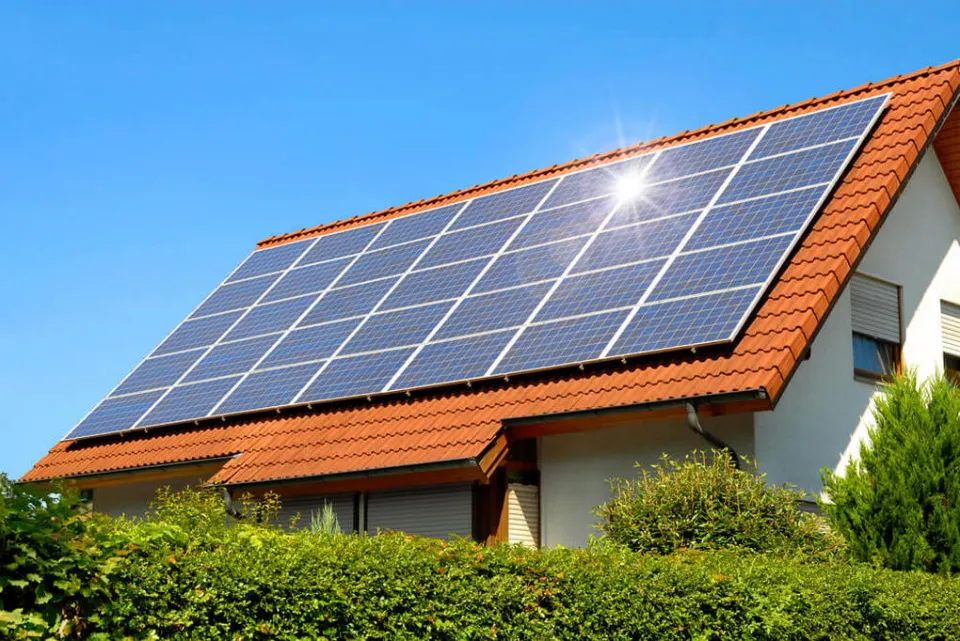Do you know what is a solar canopy? If you are planning to install it, this post is right for you.
A solar canopy is an overhead roof or an overhanging structure over which a fabric or metal covering is attached, able to provide shade or shelter from weather conditions such as sun, hail, snow and rain.
They are showing up more frequently in commercial buildings, transportation systems, recreational areas, and agriculture.
Read on to learn everything there is to know about the solar canopy.
Table of Contents
What is a Solar Canopy?
A solar canopy is a custom-built outdoor structure designed to hold an overhanging solar array. They permit the generation of solar power on a distributed basis, i.e. the production of solar electricity on-site.
‘Solar canopy’ is an umbrella term of sorts, as it is used to describe a number of different solar structures:
- Solar carports
- Solar patio covers
- Solar pergolas
- Solar gazebos
The space beneath the solar panels can be used in a practical manner with each type of solar canopy. This is a significant benefit of solar canopies and how they differ from other mounting options like rooftop and ground-mounted solar panel installations.
Solar canopies now offer home and business owners significant energy savings due to steep drops in solar panel prices and generous incentives like the solar tax credit.
Also Read: Solar Tube
Pros and Cons of Solar Canopies
Pros
- Versatility: Structures can be used for a variety of purposes
- Location flexibility: Can go in parking lots, parks, backyards, attached to buildings
- Solar optimization: When designing custom-built solar canopy structures you can adjust the orientation and angle of the panels to ensure high solar power production (unlike with roof installations, where you’re stuck with what you’ve got)
- Bifacial-friendly: Solar canopies allow the use of bifacial solar panels, the increased efficiency of which can help offset the higher cost of the mounting structure
Cons
- Higher costs: The cost of materials and labor to build the structure means that solar canopies generally cost more than rooftop installations
- Permit requirements: Many areas require a building permit from the Authority Having Jurisdiction (AHJ) for a solar canopy or similar structure; this is additional to the permitting required for a solar installation
Uses for Solar Canopies
From parks and parking lots to farms and green roofs, solar canopies cover a lot of ground.
Parking Lots and Service Stations

In addition to producing energy, parking lot canopies shield moving objects from the harsh heat of the sun’s rays as well as from precipitation such as hail and snow. Solar parking canopies are a good fit for buildings with sizable outdoor parking lots, such as airports, malls, hospitals, amusement parks, and sports stadiums, which in turn helps them meet their energy needs.
Solar canopies are becoming more common in service stations. Most service stations already shelter gas pumps with a protective canopy, so upgrading to solar is a logical move. In addition, the PV panels can directly power electric vehicle charging points.
Bus Shelters and Train Stations
Numerous city bus stops and train stations are getting solar upgrades. For instance, San Francisco has put in hundreds of grid-connected solar bus shelters. LED safety lighting, charging ports, digital displays, and even speakers for visually impaired passengers can all be powered by solar panels. The transportation agencies benefit financially from each of these features.
Rooftops
More roofs being converted to solar can significantly reduce emissions because roofs make up between 5% and 25% of the total urban surface area. However, not everyone wants traditional rooftop solar installations that might conflict with other uses.
For social purposes like gatherings and parties, solar canopies provide new possibilities. These canopies go well with green roofs as they allow for the cultivation of vegetation that prefers shadier conditions.
Agrivoltaics
Although they might not seem like a natural match, crops and solar panels can work well together. Rows of solar panels are installed in crop fields using agrivoltaic systems, which provide shade for plants that do not benefit from constant, direct sunlight while allowing plants that need the sun to grow to grow between the panel rows.
Agrivoltaics also includes solar greenhouses. Studies have shown that shaded areas can significantly cut water consumption by slowing evaporation and may increase crop yields.
How Much Do Solar Canopies Cost?
Given the numerous factors at play, it’s challenging to identify a single number.
The overall cost is determined by the size of the solar canopy structure you desire, the size of the solar system you desire on it, the standard of the equipment employed, and the cost of local installation where you reside.
The price ranges for a typical solar canopy installation are listed below.
Final Words on Solar Canopy
Solar canopies are structures designed to hold overhanging solar panels while providing usable space underneath.
Typically, solar canopies serve two purposes: they offer protection from the elements and use photovoltaic panels to produce solar energy.
In conclusion, we believed it to be a good option for use in a variety of settings.
Read More:
FAQs
Can Solar Panels Be Used as An Awning?
Awnings with solar panels make better use of available space than panels that are installed on the ground.
How Much Do Solar Racks Cost?
About $0.10 per watt.
How Does Solar Fabric Work?
Solar cell fabric is a fabric with embedded photovoltaic (PV) cells which generate electricity when exposed to light





